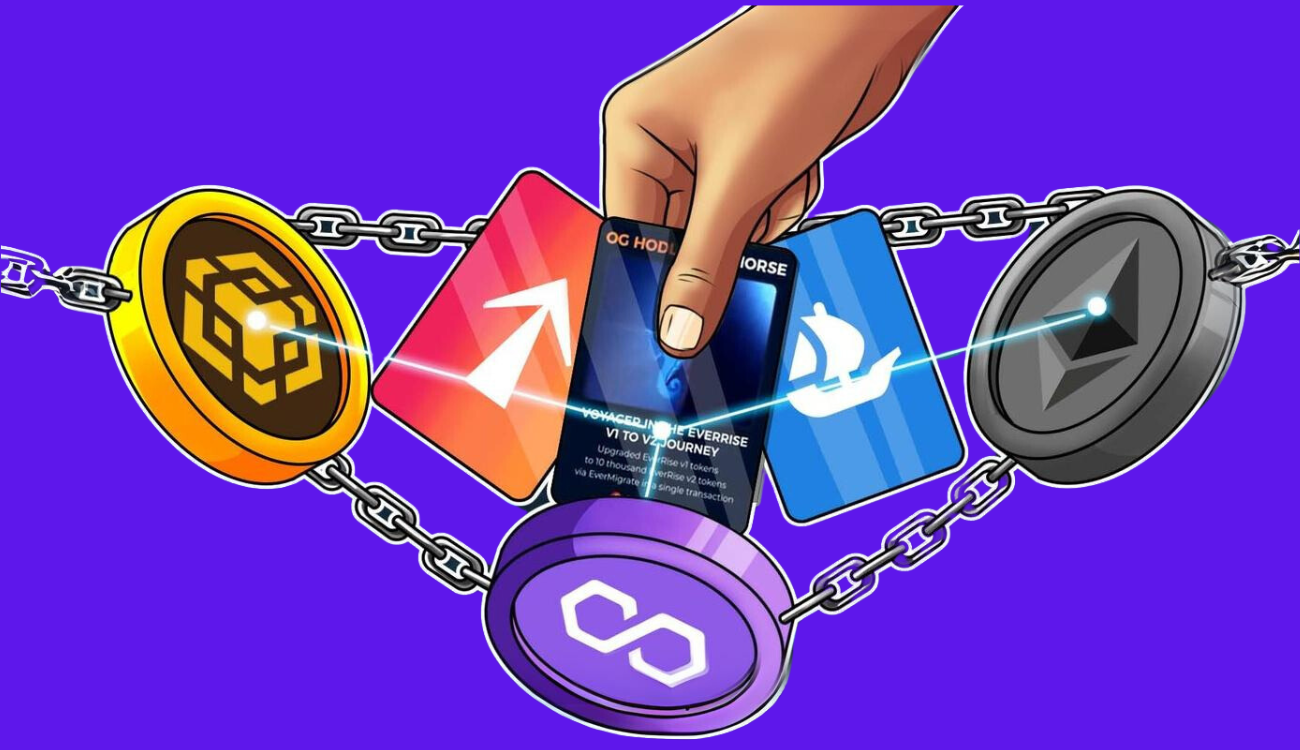SocialFi networks are monetizing attention through token-gated communities, a trend underlined by the market for distributed social networks, expected to reach $30 billion by 2026.”
SocialFi Networks employ token-gated communities to create special areas where members may access premium content, services, and interactions depending on their involvement. This method presents a novel monetizing model and improves user experience.
We shall investigate in this paper how SocialFi networks are monetizing attention through token-gated communities to change the terrain of social interaction and financial incentive.
Understanding SocialFi Networks
SocialFi networks combine the features of social media with financial incentives, therefore redefining the digital economy. Unlike conventional social media sites mostly driven by advertising, SocialFi networks are monetizing attention through token-gated communities.
These systems reward users for their efforts thereby enabling them to participate in significant interactions. Distributed governance, user ownership of data and content, and the incorporation of cryptocurrency for transactions and rewards define SocialFi networks from more traditional platforms.
Examples of Popular SocialFi Platforms:
- BitClout: A decentralized social network that allows users to buy and sell “creator coins” linked to social media profiles.

Users can profit from their popularity, making BitClout a perfect example of how SocialFi networks are monetizing attention through token-gated communities.
- Rally: This platform enables creators to launch their own social tokens, which can be used for various community engagements and monetization strategies.
Rally exemplifies how SocialFi networks foster direct creator-to-fan relationships while allowing fans to support their favorite creators financially.
- Audius: A decentralized music streaming platform where artists can publish their work without intermediaries.
Audius utilizes its native token, AUDIO, to facilitate transactions and reward users for engagement, showcasing another way SocialFi networks are monetizing attention through token-gated communities.
The Role of Tokens
Tokens play a crucial role in SocialFi networks, serving as the backbone of their economic model. There are generally three types of tokens involved:
- Utility Tokens: These allow users to access specific services within the platform, like exclusive content or features. \
By utilizing utility tokens, SocialFi networks are monetizing attention through token-gated communities, encouraging users to invest in their engagement.
- Governance Tokens: These empower users to participate in decision-making processes, such as proposing changes to the platform or voting on community initiatives.
This decentralized approach further enhances user investment and ownership in the platform.
- Community Currencies: These tokens foster interactions and transactions within the community, creating a self-sustaining economy where users can earn rewards and support one another.
Through these mechanisms, SocialFi networks are monetizing attention through token-gated communities, leading to increased user loyalty and engagement.
Token-Gated Communities: The New Frontier
Definition of Token-Gated Communities:
Exclusive digital environments inside SocialFi networks, token-gated communities allow users to access premium content, features, or interactions only by possessing particular tokens.
By using decentralization and user ownership, these groups help members to interact with other members and content creators in a more significant manner.
As a cornerstone of SocialFi, token-gated communities exemplify how SocialFi networks are monetizing attention through token-gated communities, providing a unique ecosystem where both creators and users can benefit from their interactions.
Token-Gating’s mechanical principles:
Token-gating has really simple mechanics yet strong power. To access these special areas, users have to carry a specific token count in their wallets.
Once within, customers could be able to access live feeds, behind-the-scenes knowledge, or original community experiences among other premium materials.
This model encourages users to invest in the platform and the content creators they support. Moreover, by fostering a sense of exclusivity, SocialFi networks are monetizing attention through token-gated communities, which enhances the overall user experience and loyalty.
Advantages for creators and users:
Token-gated communities provide creators as well as users great value:
- For Users: Access to exclusive content and features fosters a sense of belonging and engagement.
Token-gated community members often have deeper relationships with artists and fellow supporters, therefore enhancing their social contacts and increasing their community investment.
The exclusivity associated with token-gated access creates an environment where users feel valued, further driving their loyalty to the platform.
- For Creators: Token-gated communities enhance monetization opportunities by allowing creators to directly reward their most loyal followers.
This approach enables creators to cultivate dedicated fanbases that are financially invested in their success.
By giving unique content and experiences, creators may develop sustainable income streams while building better ties with their audience.
Ultimately, SocialFi networks are monetizing attention through token-gated communities, letting creators to use their participation in ways that traditional platforms do not.
Challenges and Criticisms of Token-Gated Models
While token-gated communities within SocialFi networks present exciting opportunities, they also face several challenges and criticisms that warrant attention. Here are seven key concerns:
Access Inequality
One of the most significant criticisms of token-gated models is that they can create exclusivity that excludes certain user demographics. Those who cannot afford to purchase tokens may be left out of valuable communities and experiences, raising ethical questions about accessibility in digital spaces. As SocialFi networks are monetizing attention through token-gated communities, this inequality can deepen existing divides among users.
Market Volatility
Token price fluctuations pose substantial risks for community participation and sustainability. When the value of tokens declines, users may be less inclined to hold or purchase them, jeopardizing the vibrancy and engagement of token-gated communities. This volatility can lead to a lack of confidence among users, diminishing the effectiveness of models where SocialFi networks are monetizing attention through token-gated communities.
Technical Barriers
The technical knowledge required to navigate crypto wallets, exchanges, and token management can be daunting for many users. This complexity may alienate potential community members who lack the necessary skills or resources, limiting the growth of these communities and countering the mission of SocialFi networks are monetizing attention through token-gated communities to foster inclusive engagement.
Over-Speculation
The speculative nature of cryptocurrencies can lead users to invest in tokens primarily for profit rather than genuine community engagement. This can result in a transactional mindset that undermines the community’s core values, as participation becomes more about financial gain than authentic interaction. Hence, while SocialFi networks are monetizing attention through token-gated communities, this shift in focus can dilute the quality of user engagement.
Regulatory Concerns
The landscape of tokenization and monetization in social platforms is still largely unregulated, raising potential legal issues for creators and users alike. Questions about the classification of tokens, compliance with securities laws, and consumer protection can create uncertainties that discourage participation. As SocialFi networks are monetizing attention through token-gated communities, navigating these regulatory challenges becomes crucial for their long-term viability.
Community Fragmentation
The division between token holders and non-holders can lead to fragmentation within communities, fostering an “us vs. them” mentality. This fragmentation can inhibit open communication and collaboration, undermining the collaborative spirit that many SocialFi platforms aim to promote. The phenomenon of SocialFi networks monetizing attention through token-gated communities can inadvertently contribute to a lack of cohesion among users.
Content Quality Concerns
With the potential for exclusive content access, there is a risk that creators may prioritize quantity over quality to keep their token holders satisfied. This focus on delivering regular content can dilute the value of offerings and result in user disengagement over time. As SocialFi networks are monetizing attention through token-gated communities, maintaining high-quality content is essential to retain user interest and loyalty.
Conclusion
SocialFi networks are monetizing attention through token-gated communities in ways that are transforming the digital landscape.
By offering exclusive access and creating vibrant, self-sustaining economies, these networks are redefining how social interactions are valued and compensated.
The token-gated model allows users to engage in premium experiences, while creators gain unprecedented opportunities for direct monetization and community building.
Through this innovative approach, SocialFi networks are monetizing attention through token-gated communities by encouraging active participation and rewarding loyalty, both of which are essential in a rapidly evolving digital economy. However, these models are not without challenges.
Access inequality, market volatility, and regulatory concerns must be addressed to ensure that SocialFi networks monetizing attention through token-gated communities can thrive in a sustainable, inclusive manner.
As we look to the future, it’s clear that SocialFi networks monetizing attention through token-gated communities will play a pivotal role in shaping how we interact, engage, and transact in digital spaces.
By addressing the current hurdles, these platforms have the potential to revolutionize both social media and financial systems, creating a new era of digital engagement and monetization.



